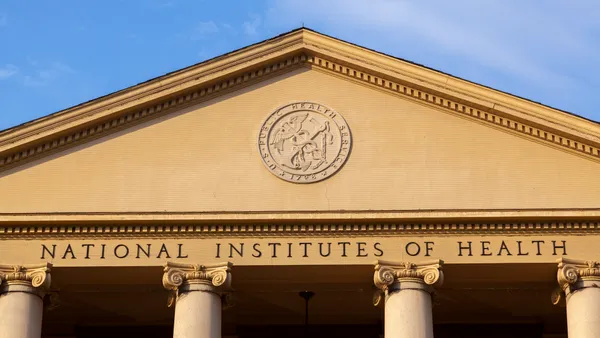Dive Brief:
- As inflation ripples through college budgets in coming years, it will drive tuition increases, reduced capital spending, less borrowing and lower endowment spending power, according to Fitch Ratings.
- The ratings agency recently published a look back at the 2021 fiscal year, finding operating and cash flow margins improved at public and private colleges whose debt it evaluates. Those indicators of financial health strengthened even though net tuition revenue dipped at most institutions. Colleges cut expenses, received federal coronavirus relief funding and benefitted from high investment returns.
- The median 2021 rating for colleges in Fitch’s portfolio did not change, staying comfortably in investment-grade territory — at AA for public institutions and A- for private ones.
Dive Insight:
Fitch was active sharing information last month as most U.S. colleges started their new fiscal years. The ratings agency circulated a forward-looking commentary on inflation and tuition and held a webinar covering current conditions. It also shared median financial data from 2021 for over 100 colleges whose debt quality it rates.
The median financial data was similar to a report released at the end of June by one of Fitch’s competitors, Moody’s Investors Service. Moody’s analyzed audited financial data at public institutions in its portfolio in 2021 — audited data is more accurate than initial figures — and found operating revenue grew by a median 3.1% amid increased state funding, federal pandemic relief and institutional expense cuts. But Moody's predicted performance will soon slip back to historic norms or fall below them.
Fitch’s recent report includes data about public institutions but also private colleges whose debt it rates.
Student fee revenue declined across private universities by a median 1.7% in 2021, Fitch said. It was the first drop in five years and played out across institutions of differing financial strength. Fitch attributed the change in many cases to pandemic restrictions that discouraged students from enrolling or kept them off campuses.
Going forward, colleges both public and private are likely to face a very different world than that of the past because of inflation and the tight labor market, according to Emily Wadhwani, Fitch senior director for U.S. Public Finance. Fitch expects tuition prices to increase between 2% and 4% for most colleges, although some have announced higher increases of up to 7%, she said in the webinar.
If students need additional financial aid to offset their own higher nontuition costs, colleges might not net much from those tuition increases, Wadhwani said.
While concerns run high that enrollment declines seen in recent years will continue, this cycle’s enrollment news isn’t all bad. Institutions reported to Fitch that applications are up this year, along with registrations and deposits, Wadhwani said.
“There have been some success stories,” Wadhwani said. “Those that have been able to remain nimble programmatically and strategically have done well, in some instances, and we’ve seen enrollment growth without compromising student quality and outcomes.”
Still, she called it unlikely that enrollment will return to pre-pandemic levels in the near future. Worries proliferate that summer melt will be high this year as students look at the labor market and high living costs and decide not to show up on campus.
Growth will probably be muted in 2023, she said. Consolidations are likely to continue, Wadhwani said, nodding to college closures and mergers.
On the expense side, deferred maintenance is a challenge across the higher ed sector, Wadhwani said. Institutions curtailed capital spending for two years during the pandemic, adding to an existing backlog.
She expects to see colleges reevaluate which facilities can be maintained and reprioritize spending so they get the best bang for their buck. States might provide one-time support through bonding or capital outlays, she said.
The report on 2021 included data for 51 public institutions and 63 private institutions in Fitch’s portfolio. Ratings agency research comes with an important caveat: Colleges with rated debt tend to be in stronger positions than higher ed as a whole.














